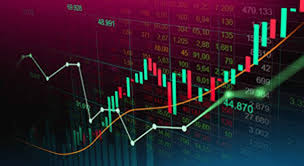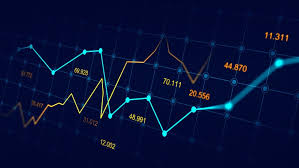
The Ultimate Guide to Forex Trading Systems
Forex trading systems are essential tools for both novice and experienced traders looking to navigate the complex world of currency trading effectively. These systems utilize various strategies and algorithms to analyze market trends, forecast price movements, and enable traders to make informed decisions. Today, we will explore the components, advantages, challenges, and types of Forex trading systems, including the importance of choosing the right forex trading system Trading Broker Global to maximize your trading potential.
What is a Forex Trading System?
A Forex trading system is essentially a set of rules and guidelines that traders use to determine when to buy or sell currency pairs. These systems can vary widely in complexity, ranging from simplistic methods based solely on technical indicators to advanced algorithms that incorporate machine learning and artificial intelligence.
Key Components of a Forex Trading System
Successful Forex trading systems typically consist of several key components:
- Trading Strategy: A defined approach to analyzing the market and making trades, often based on technical or fundamental analysis.
- Risk Management: Techniques designed to minimize losses and protect trading capital, such as stop-loss orders and position sizing.
- Signal Generation: The process of generating buy or sell signals based on the trading strategy’s rules.
- Trade Execution: The actual placing of trades, which can be manual or automated through trading platforms.
- Performance Evaluation: Ongoing analysis of trading results to assess effectiveness and make necessary adjustments.
Types of Forex Trading Systems
There are several types of Forex trading systems, each with its unique characteristics and methodologies:
1. Manual Trading Systems

These systems rely on the trader’s judgment and expertise. Manual traders analyze charts, track news, and make decisions based on their skills and experience.
2. Automated Trading Systems (Algorithmic Trading)
Automated trading systems execute trades automatically based on predefined criteria. Traders implement algorithms that analyze market conditions and act on their behalf.
3. Swing Trading Systems
Swing trading systems aim to capture market swings over several days to weeks, focusing on medium-term trends.
4. Day Trading Systems
Day trading involves making multiple trades throughout a single day to capitalize on short-term price movements. This system requires a keen eye for market fluctuations.
5. Scalping Systems

Scalping is a high-frequency strategy that involves making numerous quick trades to capture tiny price changes. It typically requires a lot of focus and discipline.
Advantages of Using a Forex Trading System
Implementing a Forex trading system presents several advantages:
- Informed Decisions: A system provides structured analysis and helps eliminate emotional trading.
- Consistent Results: Systems allow traders to follow a set process, which can lead to more consistent performance.
- Risk Control: Effective risk management techniques are integral to most trading systems, helping to safeguard your capital.
- Optimization Opportunities: Automated systems can be backtested using historical data, allowing traders to refine their strategies before risking actual capital.
Challenges of Using a Forex Trading System
Despite their advantages, Forex trading systems also come with challenges:
- Market Volatility: Rapid market changes can lead to unexpected results, impacting the effectiveness of a given trading system.
- Over-reliance on Technology: Traders can sometimes become too dependent on automated systems, neglecting to develop their analytical skills.
- System Limitations: Each trading system has its own limitations, and not all systems work in all market conditions.
- Emotional Factors: Even with a system in place, human emotions can still influence trading decisions.
Choosing the Right Forex Trading Broker
Selecting the right Forex trading broker is crucial for the success of any trading system. Factors to consider when choosing a broker include:
- Regulation: Ensure the broker is regulated by a reputable authority to protect your funds.
- Trading Platform: Opt for a user-friendly platform that supports your trading system and offers necessary tools and resources.
- Spreads and Commissions: Evaluate the broker’s fee structure to ensure it aligns with your trading style.
- Customer Support: Access to responsive customer service can be invaluable, especially for new traders.
Final Thoughts
Forex trading systems can greatly enhance a trader’s ability to respond to market movements and manage risks. However, it’s essential to choose a system that aligns with your trading style and personal goals. By integrating solid strategies, effective risk management, and leveraging the support of a reliable Forex broker, traders can maximize their opportunities in the dynamic world of currency trading.

